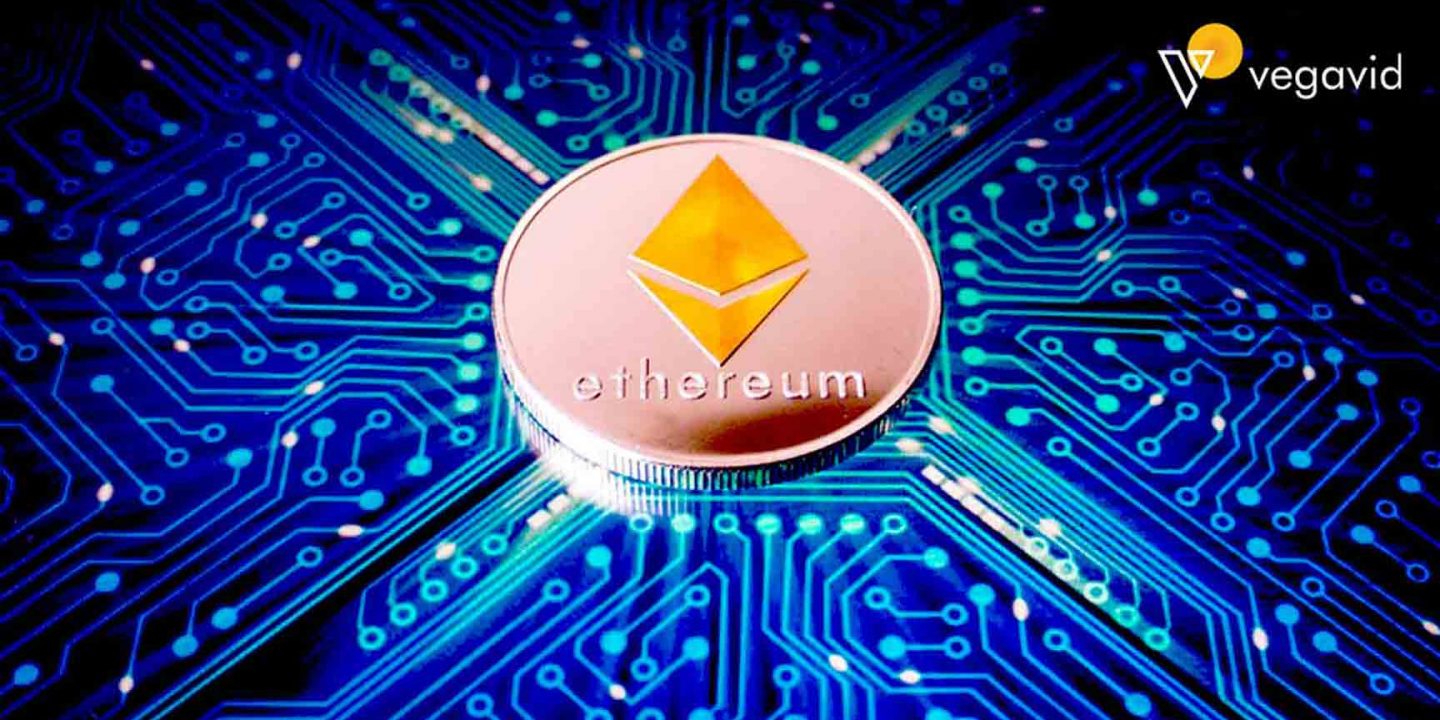
Ethereum is a revolutionary new platform that is changing the way we think about digital money and applications. It enables developers to build decentralized applications (apps) on its blockchain using smart contracts. These apps can be used to replace existing systems like banking, voting, storage, and other services without centralized control or intermediaries. The future possibilities with this technology seem endless.
In this article, we will explore what Ethereum is, how it works, and discuss whether it could become the future of cryptocurrency and decentralized applications. We will look at key facts about Ethereum, and examples of real-world uses today, and provide forecasts for how the technology may evolve and impact our lives in the coming years. By the end, readers should have a solid understanding of this innovative blockchain platform and be able to form their own opinions on its potential to transform many industries.
Let’s start our journey into the exciting world of Ethereum!
What is Ethereum?
Ethereum is one of the most influential blockchain technologies to emerge since Bitcoin. Invented in 2015 by VitalikButerin, Ethereum introduced the revolutionary concept of decentralized applications (Dapps) through its innovation of smart contracts. Currently, Ethereum has a market capitalization of over $250 billion with over $10 billion in daily transaction volume according to CoinMarketCap. It has inspired a whole new “Ethereum killers” sector aiming to compete with its success. So what exactly is Ethereum and how does it differ from earlier blockchains? In simple terms, Ethereum is an open blockchain network that allows developers to build and deploy decentralized applications. Some key things to know:
- Ethereum was launched in 2015 by VitalikButerin and is considered the second major cryptocurrency platform after Bitcoin.
- Like Bitcoin, Ethereum uses a blockchain and cryptocurrency called Ether (ETH) that can be exchanged for other currencies.
- However, Ethereum’s real innovation is its ability to support smart contracts using its Ethereum Virtual Machine (EVM).
- Smart contracts are programs stored on the blockchain that run when predetermined conditions are met. They typically automate the execution of an agreement so that all participants can be immediately certain of the outcome, without any intermediary’s involvement or time loss.
- This allows developers to create applications that have reliable rules and are resistant to domestic interference. Smart contracts are helping give birth to entirely new kinds of digital agreements.
- Ethereum’s smart contracts set it apart from earlier blockchains like Bitcoin, enabling the creation of decentralized applications (DApps) that run on its blockchain.
So in summary, while Bitcoin introduced the world to blockchain and cryptocurrencies, Ethereum took it a step further by facilitating decentralized applications through its revolutionary smart contract functionality. This programmable blockchain opens up massive opportunities across many industries.
How Does Ethereum Work?
For something with such potential to reshape entire industries, Ethereum’s inner workings can seem complex. However, understanding a few key components is critical to grasping both its present capabilities and ambitious long-term technical roadmap. At its core, Ethereum relies on an Ethereum Virtual Machine (EVM) that runs on a distributed worldwide network of thousands of computers. Additionally, Ethereum uses a “proof-of-work” consensus model secured by miners, as well as its cryptocurrency called Ether that powers the network. Let’s break down these interacting elements that collectively form the foundation of an entirely new decentralized computing paradigm.To truly understand Ethereum’s potential, it helps to grasp the basics of how it operates at a technical level:
The Ethereum Virtual Machine (EVM)
- The Ethereum Virtual Machine (EVM) acts as a global computer for running decentralized applications and smart contracts.
- All Ethereum nodes run the same EVM code, allowing them to reach network consensus and process transactions simultaneously across the globe.
- Developers write smart contracts using Ethereum-supported programming languages that get compiled into EVM bytecode to be deployed on the blockchain.
Mining and Consensus
- Like Bitcoin, Ethereum uses a “proof-of-work” consensus model where miners use computing power to validate transactions and secure the network.
- Miners are incentivized by being rewarded with Ether for processing transactions and adding new blocks to the blockchain.
- As more miners join, it becomes increasingly difficult to mine new Ether, keeping the cryptocurrency scarce like gold.
Ether (ETH)
- Ether (ETH) is the cryptocurrency or “fuel” that powers the Ethereum economy. It allows users to pay transaction fees.
- ETH can be used as a currency for paying for goods and services, but its primary function is to allow users to pay for computational services on the Ethereum network like running smart contracts and apps.
So in summary, the EVM acts as a virtual computer, miners secure the network via proof-of-work, and Ether is the currency that powers smart contracts and decentralized applications on the Ethereum blockchain. This innovation unlocks immense possibilities compared to earlier cryptocurrency platforms.
Real-World Uses of Ethereum Today
While still in the early days eight years after launching, Ethereum is already demonstrating tangible, real-world applications that are improving people’s lives and opening new financial opportunities around the world. From enabling billions of dollars in global peer-to-peer cryptocurrency trading to representing digital art worth millions, Ethereum’s use cases span a diverse range of industries. In this section, we’ll explore several examples including decentralized finance (DeFi), non-fungible tokens (NFTs), blockchain gaming, and supply chain solutions to see how Ethereum is being applied today and the early traction it is gaining. While still in its early days, Ethereum has already inspired many exciting use cases across industries from finance to gaming. Here are a few examples:
Decentralized Finance (DeFi)
- Decentralized lending protocols like MakerDAO and Aave allow users to borrow and earn interest on cryptocurrency deposits without middlemen.
- Decentralized exchanges like Uniswap facilitate peer-to-peer cryptocurrency trading without centralized authorities.
- prediction markets like Augur enable event betting via smart contracts instead of centralized bookmakers.
Non-Fungible Tokens (NFTs)
- NFTs represent unique digital assets like digital art, collectibles, domain names, and more. Popular marketplaces include OpenSea and Rarible.
- NFTs saw a boom in 2021 with record sales of digital art and celebrities like Grimes and Lindsay Lohan entering the space.
Gaming
- Blockchain games like Axie Infinity and Gods Unchained use NFTs to represent in-game assets that players truly own and can exchange or sell.
- Pay-to-earn games allow players to earn money simply by playing and accomplishing tasks within immersive virtual worlds.
Supply Chain Management
- Platforms like VeChain and Walmart China utilize smart contracts to transparently track product inventory, quality certifications, and shipments across global supply chains.
So as you can see, Ethereum is already enabling fascinating new sectors from finance to art to gaming. But its potential has barely been tapped – stay tuned for what innovative apps developers build next!
Forecasts for Ethereum Over the Next Few Years
As we move into 2023 and beyond, excitement continues to build around Ethereum’s development roadmap and long-term scaling plans. Vast performance and efficiency upgrades are scheduled for the next two years that could supercharge its functionality by orders of magnitude. The transition to a proof-of-stake network is expected to be completed in 2023, reducing energy usage by 99%. Meanwhile, the implementation of sharding in 2024-2025 aims to enable processing over 100,000 transactions per second. These scaling solutions are key to fulfilling Ethereum’s bold vision of supporting hundreds of millions or billions of users interacting in a trustless, decentralized digital economy. Looking ahead, Ethereum continues to evolve rapidly and aims to scale much further to meet the growing demand for decentralized applications. Here are some predictions:
The Move to Proof-of-Stake
- Ethereum’s current energy-intensive proof-of-work system is planned to transition to a more efficient proof-of-stake model called “Ethereum 2.0” by 2022-2023.
- Proof-of-stake shifts security from miners to validators who stake their ETH, significantly lowering the network’s environmental impact.
Scalability Improvements
- Upgrades like sharding will enable parallel processing of more transactions at once, boosting throughput to thousands or millions per second.
- Layer 2 solutions like Optimism and Arbitrum also help scale the platform by enabling off-chain transaction processing.
- Together, these upgrades aim to fulfill Ethereum’s long-term vision of enabling millions or billions of users and IoT devices.
Continued Growth of DeFi and Dapps
- With improved scalability and lower fees, Ethereum may see an explosion of decentralized applications across industries.
- DeFi in particular remains very niche but could become mainstream if user experience reaches credit card or banking levels.
- More educational and user-friendly applications may drive greater adoption of Ethereum by average users.
So in summary, with major technical improvements underway, the Ethereum ecosystem is positioning itself strongly to scale massively while keeping carbon emissions low – paving the way for unprecedented levels of decentralization globally.
Is Ethereum The Future of Cryptocurrency?
Seven years since its launch, Ethereum has risen from an experimental idea to become the dominant platform for decentralized applications and smart contracts. However, the million-dollar question remains – can it achieve its goal of something far greater than any existing cryptocurrency and perhaps even replace institutions like banks over the coming decades? There are certainly risks and uncertainties ahead as the industry evolves. But Ethereum’s unparalleled network effects, ongoing technical upgrades, and first-mover advantage mean it is very likely to remain the leading smart contract platform for the foreseeable future, with the potential to change our entire existence in the digital age. After exploring what Ethereum is, examples of its real-world uses today, and forecasts for its evolution in the coming years, we can now evaluate the big question – could Ethereum become the dominant cryptocurrency platform of the future and fulfill its ambitious vision?
Compelling Vision and Innovation
Ethereum was the first cryptocurrency to introduce programmable smart contracts, which enable exponentially more possibilities than just currency transactions alone. Decentralized applications were not possible before Ethereum.
Growing Adoption and Developer Support
The number of Ethereum users, transactions, and developer activity continues growing rapidly year after year despite being in the early stages. Major brands and governments are also exploring Ethereum applications.
Technical Feasibility
Ethereum’s multi-year upgrade roadmap towards scalability, sustainability, and mass adoption via sharding, proof-of-stake, and layer 2 protocols shows its plan is technically viable based on research done so far.
Potential for Mainstreaming Cryptocurrency
Experts argue that only when decentralized applications offer clear benefits over centralized services will mainstream consumers adopt them. Ethereum aims to make cryptocurrency useful beyond payments by powering the applications people use daily.
Resilience to Competition
No other cryptocurrency to date matches Ethereum’s combination of network effects, innovation, and real-world integration. Although competitors may gain some adoption for specialized uses, none appear capable of replicating Ethereum’s holistic value proposition.
Of course, there are also risks to consider. Technical challenges in upgrading, security issues, regulatory uncertainty, and competition are ongoing risks. Ethereum also faced criticism over high transaction costs and scalability limitations before recent improvements as well.
Conclusion
However, based on the compelling merits we’ve examined as well as Ethereum’s significant industry backing and multi-year technical roadmap, it is very likely Ethereum will remain the dominant smart contract platform for the foreseeable future and fulfill its ambitious vision of enabling a “World Computer.” With further development, it has the ingredients to become the de facto financial rail of the digital world. Ultimately though, time will tell as the technology.








